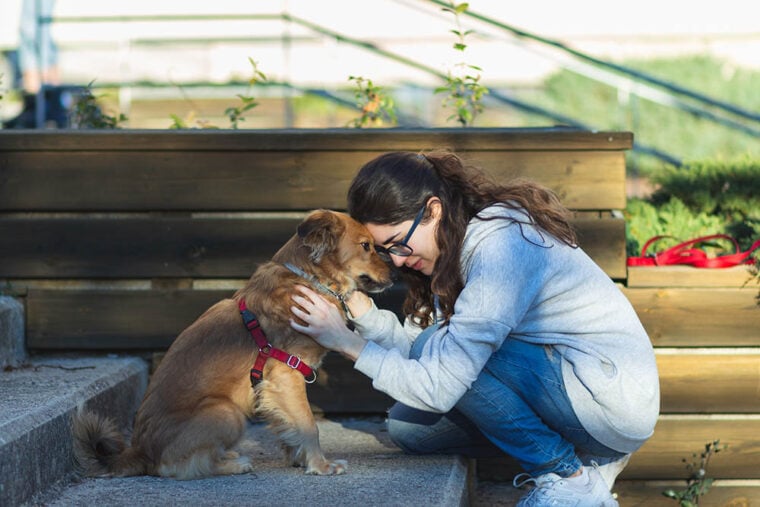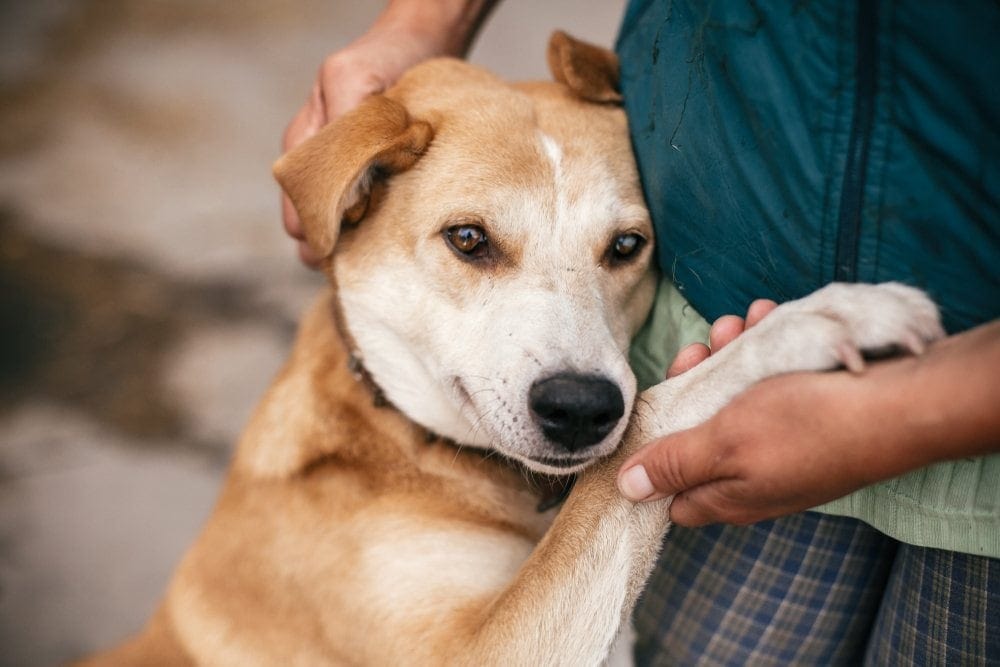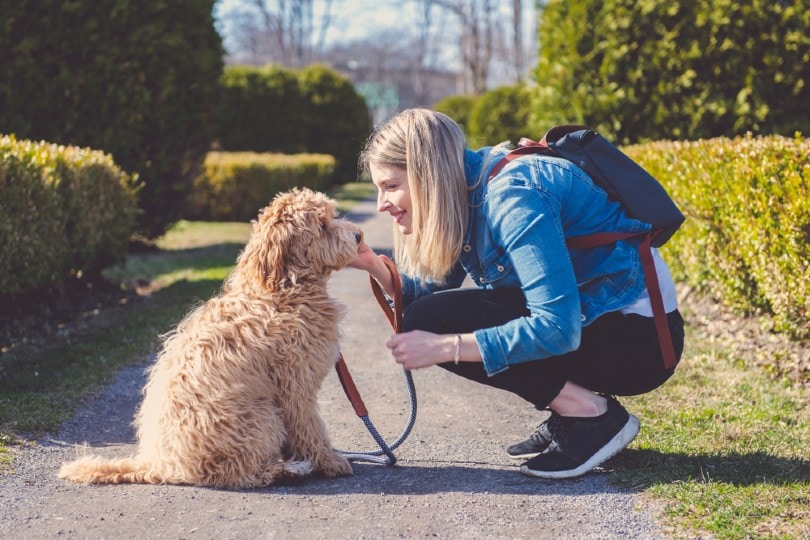
If you’ve recently adopted a dog from a shelter or breed-specific rescue organization, you may be concerned about your new pet’s unwillingness to engage with the family. Perhaps you’ve noticed signs of anxiety, such as pacing, excessive barking, or yowling, and are concerned that your new pet is scared and in need of comforting.
Moving to a new home can be an incredibly stressful experience for a dog. Most take at least 3 weeks to settle in after a change in owner and living space. Before you can provide your new dog with the sense of comfort they need, you’ll need to earn your new pet’s trust. Read on for eight tips and strategies you can use to earn the trust of a scared dog.
The 8 Tips to Earn the Trust of a Scared Dog
1. Speak Softly
Dogs are incredibly sensitive creatures and exquisitely attuned to human emotions. You may be able to ease an anxious dog’s anxiety just by talking to them in a calm tone with a slow and steady cadence.
Control your emotions and anxiety to prevent your new pet from picking up on your energy and demonstrating fear-based behaviors in response. And pay attention to the animal’s body language to ensure you’re giving the dog plenty of room and not stressing it out.

2. Sit & Spend Time With the Dog
Let the dog get used to your presence. The more time you spend doing fun things with your dog, the faster the transition process occurs. But if your new pet refuses to come out and play, it’s okay to spend quiet time in the same room as your new pet. Just make sure your presence isn’t agitating the animal.
Let the dog make the first move. Sitting there and allowing the dog to become accustomed to your scent and presence is a great, low-stress way to start building a bond with your new pet.
3. Avoid Direct Eye Contact
Do everything you can to make your new pet feel comfortable, including avoiding direct eye contact. Wolves and dogs often interpret direct eye contact as a challenge. Minimize direct eye contact with the dog to keep things low-key and mellow. Allow the dog to look at you more often than you look at them.
Avoiding direct eye contact will help the dog feel more comfortable around you. In case you’re wondering, it’s normal for dogs to enjoy gazing into their beloved human’s eyes. Most dogs are only disconcerted by strangers making sustained eye contact.

4. Provide Treats & Food
Dogs often bond deeply with the humans who provide them with food, shelter, and affection. Treats can motivate a shy, scared dog to interact with humans in ways that allow the development of trust-based relationships. Use treats to encourage the dog to associate your presence with something pleasant.
Consider staying in the room while your dog eats their meals. You may need to provide the food to your pet and then back away at first. Over time, your pet will learn to associate your presence with mealtimes, being cared for, and other pleasant things.
5. Let the Dog Make the First Move
Allow the dog to set the pace regarding contact and interaction. Building trust requires patience and gentleness. You might have to leave a few treats and walk away at first. Don’t be disappointed if your newly adopted pet keeps its distance for a bit; it’s totally natural and will most likely resolve itself over time.
Earning the trust of a scared dog is most easily accomplished by showing interest in the animal, meeting the dog’s needs for food and shelter, and providing an environment where the animal feels safe. Once a scared dog tolerates a person’s presence and starts turning to that individual for food, the trust-earning process is well underway.

6. Leave Your Scent Behind
It’s usually best to confine new pets to a limited area of the house the first few days after they come home, particularly if you already have pets who’ll need to learn to live with the new arrival. You want to create a safe space where your new pet feels comfortable as they adjust to the rhythms and smells of their new home.
Consider putting a comfy dog bed in whatever room you set up for your new pet to curl up in until everyone gets adjusted. Tuck a worn t-shirt or sweatshirt into the dog bed so your new pet begins associating you with comfort and safety.
7. Get Down to the Dog’s Level
Do everything you can to prevent your new dog from becoming stressed, including approaching the animal on their level. Dogs are often stressed when unknown humans approach and tower above them.
It can be interpreted as human aggression. Squatting down to pet a dog instead of merely bending over brings you closer to the dog’s eye level. It builds trust and helps prevent the triggering of stress reactions, which often lead to defensive aggression.

8. Show Them Your Side
How you approach a scared dog can make a world of difference in how your presence is perceived. Approaching slowly while speaking in gentle tones often calms skittish animals.
Give your pet some space and turn sideways if you suspect your dog is becoming overstimulated by your presence. By turning sideways, you’ll appear smaller and, therefore, less of a threat, hopefully ensuring your pet remains comfortable enough that they don’t react out of fear.
Conclusion
If you’ve recently adopted a dog from a shelter or rescue organization and are looking for ways to make your new love feel comfortable, there are several things you can do to get things moving in the right way, including avoiding eye contact and providing treats.
While it takes some dogs longer to settle into their new environments, most dogs adjust to new surroundings within 3 weeks or so. With space, time, patience, and lots of love, your new family member will snuggle up to you in no time.
Featured Image Credit: Anagarcia, Shutterstock






